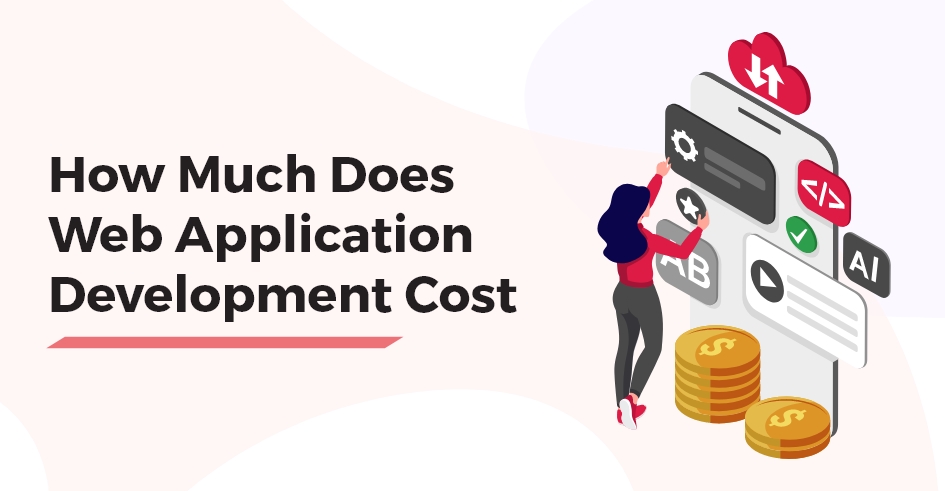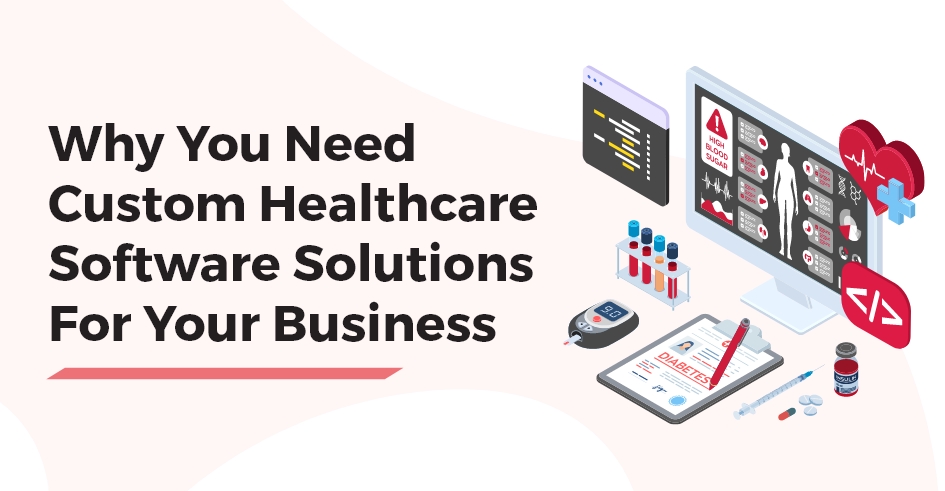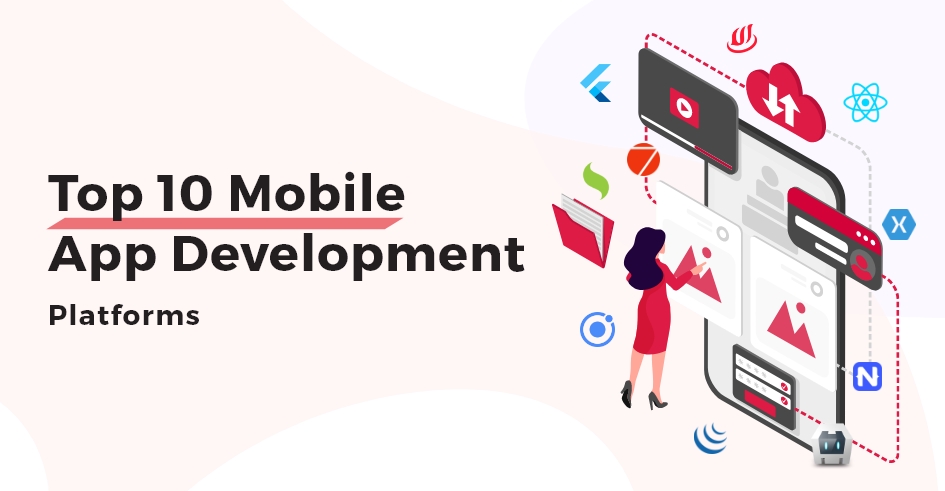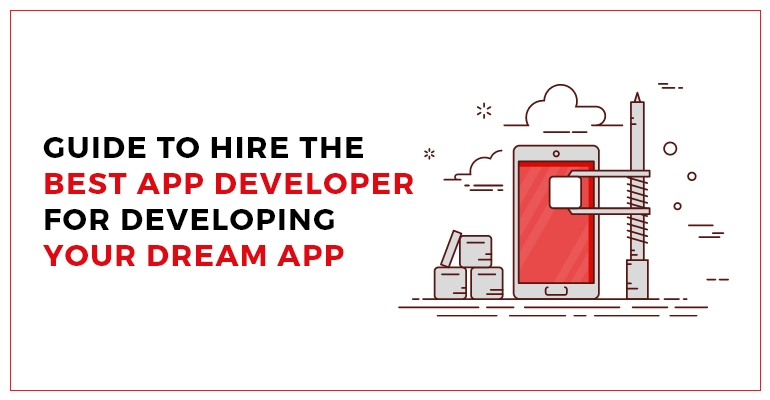With the U.S. projected to lead in web application development revenue in 2024, generating $91,950 million, the demand for innovative web apps is soaring. The expanding market is pushing up web application development costs as more businesses invest in advanced solutions for a competitive edge.
The cost of developing a web application varies based on complexity and features. Here are the approximate ranges for 2025:
- Simple web app: $10,000 – $25,000 for basic features and a simple interface.
- Medium-sized web app: $25,000 – $60,000 for advanced features like database integration and real-time updates.
- Complex web app: $60,000 – $250,000+ for intricate designs, extensive databases, and complex functionalities.
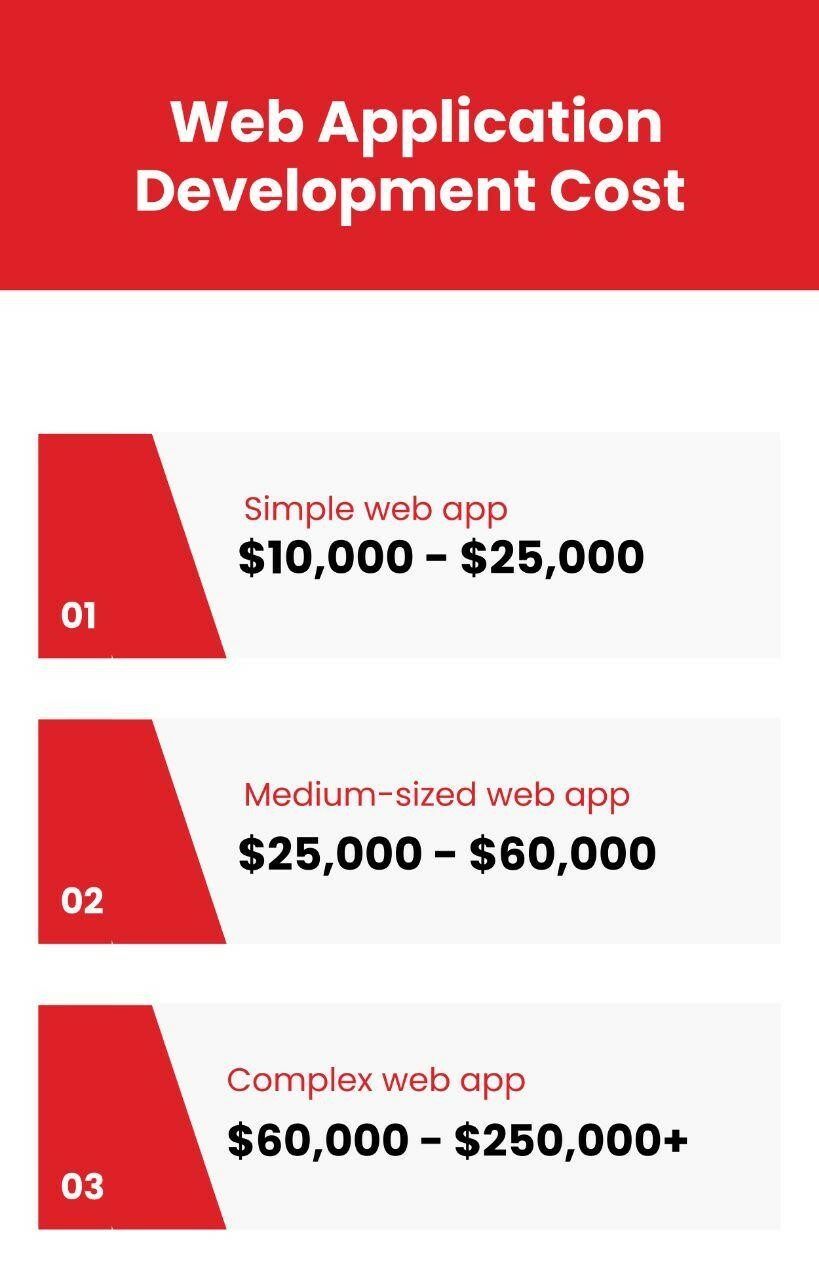
With the increasing need for web application development to improve business and user engagement, companies in 2025 have one important question: How much does web application development cost? As we discussed above, the web application development cost varies widely, depending on the app’s complexity, required features, and your choice of development team.
Without understanding these factors, it’s easy to underestimate the budget needed for a successful, scalable web app. Many web application development companies often struggle with the unpredictability of web app development costs. From initial planning to final deployment, unexpected expenses can arise. The cost of web application development especially rises when you add advanced features for a highly polished end product. Moreover, choosing between freelancers, in-house teams, and outsourcing options adds another layer of complexity to budget planning.
This guide provides a comprehensive look at the factors influencing web application development costs in 2025, along with cost breakdowns based on app complexity. We will provide real-world examples and current trends to help you budget for your next project. This applies whether you are looking into web application development Dallas or Mobile App development in New York.
Factors Affecting Web Application Development Cost
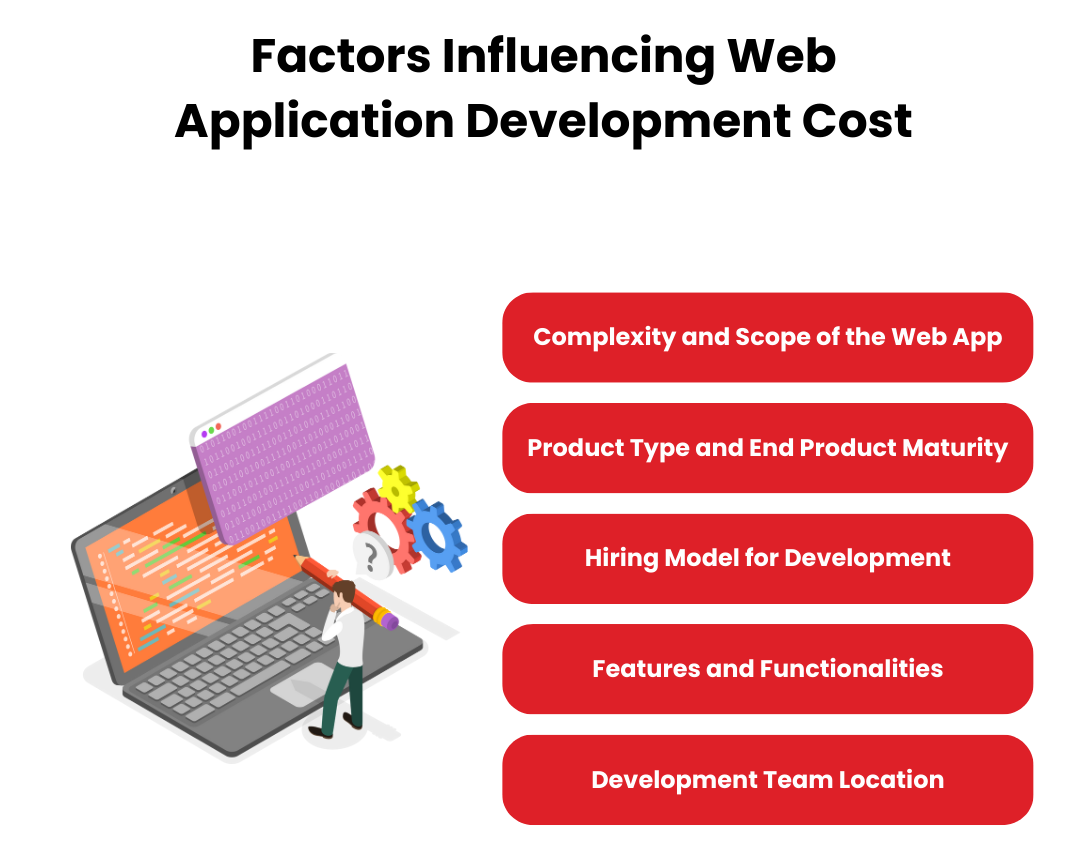
The web application development cost hinges on multiple elements, from app features to development team type. The cost of web application development depends on:
- Complexity and Scope of the Web App
- Product Type and End Product Maturity
- Hiring Model for Development
- Features and Functionalities
- Development Team Location
Here is a breakdown of each of them to help you clear your head on web application development costs:
Complexity and Scope of the Web App
When considering web application development cost, one of the most significant factors is the complexity and scope of the web app itself. Here’s a breakdown of the typical cost ranges based on complexity:
Simple Web App
A basic web app with limited features and a clear interface typically costs between $10,000 and $25,000. These apps are a cost-effective way for businesses to start building an online presence.
Medium-sized Web App
For those seeking more advanced functionalities, such as database integration and real-time updates, the web application development cost escalates to between $25,000 and $60,000. This range is designed for businesses that need advanced interactions and data management.
Complex Web App
A high-end web app that includes extensive functionalities, intricate designs, and larger databases can have a web application development cost ranging from $60,000 to $250,000 or more. These applications often cater to enterprises with specific needs, integrating various features to enhance user experience and operational efficiency.
Check out our Web Application Development Guide for a deeper look at the process and stages involved in creating a successful web application.
Product Type and End Product Maturity
Another important consideration impacting web application development cost is the type of product being developed:
Minimum Viable Product (MVP)
An MVP focuses on basic features for companies aiming to validate their ideas with minimal expenditure. This approach allows businesses to gather user feedback quickly and is a cost-effective solution that typically results in a lower overall web application development cost. For more in-depth insight about MVP, check our MVP App Development Guide.
Ready-to-Market Product
On the other hand, a fully polished and highly functional product may require a larger budget because of the extra refinement and testing involved. Companies aiming to launch a competitive product will often see that the cost of web application development can rise significantly when trying to achieve a market-ready status.
Hiring Model for Development
The web application development cost is also influenced by the hiring model chosen for the development process:
Freelancers
While hiring freelancers can be a budget-friendly option, it may introduce risks related to consistency and maintenance. The web application development cost in this model can be lower initially but may lead to higher long-term expenses due to potential rework.
In-House Team
Employing an in-house development team provides higher quality control and closer alignment with company goals. However, this model typically incurs a higher web application development cost due to salaries, benefits, and overhead expenses.
Outsourcing Agency
Collaborating with a web application development agency offers a balanced approach. These agencies provide access to dedicated teams with various expertise levels, allowing businesses to find a solution that fits their budget while ensuring quality. The web application development cost with an outsourcing agency is often more predictable than that of freelancers. As the best outsourcing development company, we give you the top talent for as low as $99 per day! Hire them now!

Features and Functionalities
The range and complexity of features included in a web application significantly influence the cost of web application development. Each feature not only adds value to the user experience but also affects the time, resources, and technologies required for development. Our experts have created an in-depth look at how various features contribute to the overall cost:
1. Basic Features
Basic features are the essential parts of any web application. They usually include user login, a dashboard, and user profile management. While these features are important, they are generally simpler and cost less to develop. Creating these basic functions takes less time, which lowers the overall development cost.
2. Database Integration
Integrating a database is an important feature for many web applications. We suggest our clients use this feature, particularly if they require data storage and retrieval. The complexity of the database—whether it’s relational (SQL) or non-relational (NoSQL)—directly affects the web application development cost.
- Simple Database Integration: For applications that require basic data storage, integration might involve creating a few tables and simple queries. This could add a cost of around $5,000 to $15,000.
- Complex Database Systems: On the other hand, applications needing extensive data manipulation, real-time data analytics, or handling large volumes of data will require a more robust database architecture. This can raise costs significantly, potentially adding $15,000 to $30,000 or more to the overall budget.
3. Secure Payment Gateways
For e-commerce applications or any web app that handles financial transactions, integrating secure payment gateways is essential. This feature ensures that user payment information is processed securely, which is crucial for maintaining user trust.
- Basic Payment Integration: If you choose to integrate a standard payment processor like PayPal or Stripe, the cost might be around $3,000 to $10,000, depending on the complexity of the integration.
- Custom Payment Solutions: However, if your application requires a more sophisticated or custom payment processing system, such as support for multiple currencies or specific regulatory compliance, the web application development cost can rise from $10,000 to $20,000 or higher.
4. Real-Time Notifications
Real-time notifications enhance user engagement by providing immediate updates, such as alerts for new messages, changes in status, or promotional offers. Implementing this feature requires the use of specific technologies like WebSockets or third-party services.
- Basic Notifications: Simple notification systems may be less complex, costing approximately $5,000 to $10,000.
- Advanced Notification Systems: More complex implementations that require scalability and reliability can significantly increase the web application development cost, potentially adding $10,000 to $25,000 to your project.
5. User Interface (UI) and User Experience (UX) Design
The design aspect is crucial for user engagement and satisfaction. A well-thought-out UI/UX can make a web application intuitive and enjoyable to use, but achieving this often requires additional resources.
- Basic UI/UX Design: A simple, template-based design may keep costs down, typically ranging from $5,000 to $15,000.
- Custom and Advanced UI/UX Design: However, creating a unique, high-end design tailored to your brand and audience may push the web application development cost into the range of $15,000 to $50,000 or more, depending on the complexity and number of screens involved.
6. Advanced Features
Adding advanced features such as artificial intelligence (AI) functionalities, analytics dashboards, multi-language support, and integrations with third-party services or APIs can significantly impact the overall web application development cost.
- AI Implementations: For example, incorporating AI-driven features such as chatbots or personalized recommendations could add anywhere from $10,000 to $50,000 to the cost, depending on the level of sophistication.
- API Integrations: Depending on the number and complexity of integrations, this can add another $5,000 to $20,000 to your budget.
Development Team Location
Finally, the location of your development team significantly influences the web application development cost:
U.S.-Based Teams
Hiring U.S.-based developers typically incurs rates ranging from $100 to $200 per hour. Due to local market demand and expertise, web application development Dallas could be on the higher end of this spectrum.
Offshore Teams
On the other hand, engaging with offshore teams can substantially reduce costs. Eastern European developers may charge between $50 and $100 per hour, while rates in Asia might range from $25 to $50 per hour. While this can lower the web application development cost, it’s essential to consider potential challenges like time zone differences and communication barriers.
Web Application Development Cost Estimation for 2025
To better understand the average cost of web application development, here’s an estimate based on app complexity:
Simple Web Application
- Basic app with limited features and a simple UI.
- Estimated Cost: $10,000 – $25,000
- Examples: Basic catalog sites and small content platforms.
Medium-Sized Web Application
- Apps with additional features like real-time updates and database integration.
- Estimated Cost: $25,000 – $60,000
- Examples: Small e-commerce platforms and client portals with user logins.
Complex Web Application
- Feature-rich applications with custom functionalities, extensive databases, and high-level security.
- Estimated Cost: $60,000 – $250,000+
- Examples: Large e-commerce sites, data-driven applications, or enterprise solutions.
Web Application Development Cost Breakdown by Phase
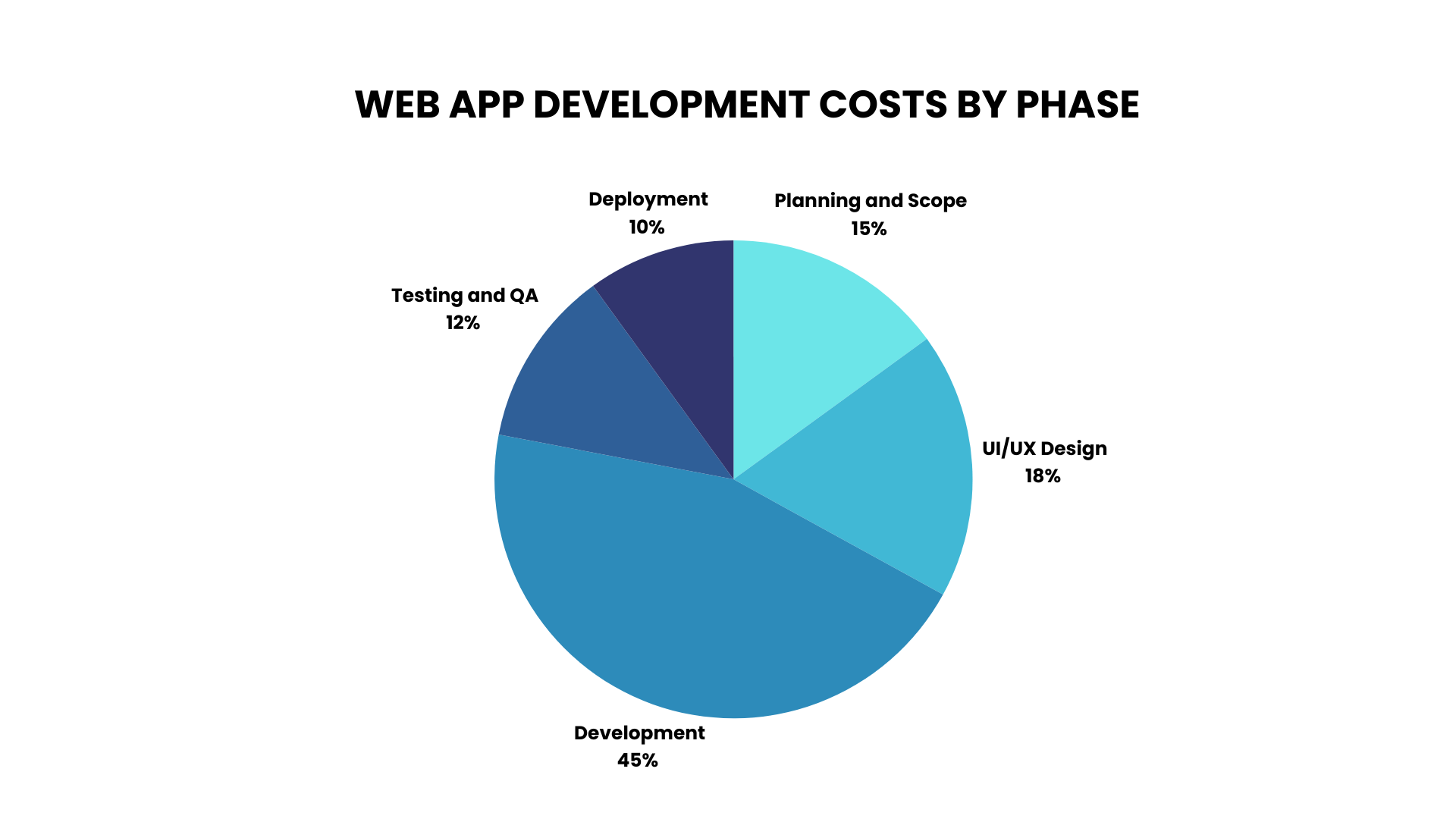
We have done countless projects for web apps. To help our clients understand the budget better, we give them Web Application Development Cost Breakdown by Phase. This helps them plan a web application and budget effectively. Each stage of the development process contributes to the overall web application development cost:
1. Planning and Scope Definition (10-15%)
This initial phase involves gathering requirements and setting clear goals. It’s essential to align the project with user needs and business objectives.
2. UI/UX Design (15-20%)
In this stage, designers focus on creating a visually appealing and user-friendly interface. A well-thought-out design enhances user experience and encourages engagement.
3. Development (40-50%)
The most significant portion of the budget goes here, covering both front-end and back-end coding. This phase also includes database setup and integration of essential features.
4. Testing and QA (10-15%)
Rigorous testing is vital to ensure the app’s stability, performance, and security. Quality assurance helps identify and fix any issues before deployment.
5. Deployment and Ongoing Maintenance (5-10%)
After the app is launched, ongoing support and maintenance are crucial for its long-term success. This phase ensures that the application remains functional and up-to-date.
Real-World Examples of Web Application Development Costs
When considering the web application development cost, real-world examples can provide valuable insights into what businesses can expect based on their specific needs.
When our clients ask for our enterprise application development services, we immediately think of it as the best example to quote here. Enterprise Web Apps are custom applications designed for large organizations and often come with extensive features, including sophisticated databases, real-time data processing, and high-level security measures. These types of applications cater to complex operational requirements and typically demand a significant investment. The development cost for an enterprise web app can exceed $100,000, depending on the specific functionalities and security protocols needed.
Trends in Web Application Development Costs for 2025
As we look ahead to 2025, several trends might influence the web application development cost. Understanding these trends can help your business budget more effectively. Here are some key trends to consider:
Increased Demand for Customization
As businesses continue to recognize the importance of tailored solutions, the demand for them to invest in web applications is expected to rise. As businesses shift towards personalized development, costs may rise. This increase often stems from the need for specialized features to meet specific business needs. Customization takes more time for planning, design, and development, which can raise the total cost of web application development.
Adoption of Progressive Web Apps (PWAs)
As progressive web applications (PWAs) become more popular, businesses may change how they develop their apps. PWAs combine the benefits of web and mobile applications, like working offline and loading quickly. Although developing PWAs may cost more at first, they can help businesses reach more users and lower costs by reducing the need for separate mobile app development in the long run.
Integration of Advanced Technologies
Using advanced technologies like artificial intelligence (AI), machine learning (ML), and blockchain is becoming more common in web development. Artificial Intelligence Services can improve how applications work and how users experience them. On the contrary, they can also make development more complex and time-consuming. As a result, businesses should be ready to spend more money to add these features to their applications. Instead, opting for them in the fear of missing out.
Remote and Distributed Development Teams
With remote work becoming standard, companies are more likely to hire development teams from different locations. It’s like assembling the Avengers, where each hero brings unique strengths from other parts of the globe! While this can save money in some cases, it can also create challenges in managing projects and communication. Companies might need to spend extra to ensure their teams work well together across different time zones and places.
Market Competition and Talent Scarcity
There is a growing demand for skilled developers, which can lead to higher pay and project costs. In a world where developers are like the rare Pokémon you need to catch, companies aiming to attract top talent may need to offer better salaries or more appealing projects, raising development costs. This is especially true in tech hubs like Dallas, where web application development agencies may charge more for their services. So, be prepared to fork over a bit more cash, or you might end up with a team of trainees who think “stack overflow” is just a term for a messy desk!
Web App Cost Calculator
To calculate the cost of developing a web application, you can use a simple web app cost calculator that incorporates various factors affecting the overall budget. Here’s a basic web app cost calculator you can follow:
Web App Cost Calculation Formula
Total Cost = (Base Development Cost + Design Cost + Features Cost + Location Cost) + Ongoing Maintenance Cost
Breakdown of the Formula
Base Development Cost
This is the initial cost estimate based on the type of application:
- Basic App: $5,000 – $20,000
- Moderate App: $20,000 – $50,000
- Complex App: $50,000 – $200,000+
Design Cost
Add the design complexity:
- Basic Design: Base Development Cost × 10%
- Custom Design: Base Development Cost × 20% to 30%
Features Cost
List all desired features and estimate their costs. Add these costs together to get the Features Cost.
Location Cost
Based on where your development team is located:
- TechnBrains’ developer: Hourly rate × estimated hours ($11 per hour/ $99 per day)
Ongoing Maintenance Cost
This is typically a percentage of the total development cost:
- Basic Maintenance: Total Cost × 15%
- Comprehensive Support: Total Cost × 20% to 30%
Example Calculation
If you decide on a moderate app with custom design and specific features, here’s a simplified example:
- Base Development Cost: $30,000 (for moderate app)
- Design Cost: $30,000 × 20% = $6,000 (for custom design)
- Features Cost: $5,000 (for additional features)
- Location Cost: $11/hour × 500 hours = $5,500 (for TechnBrains developer)
Total Cost = ($30,000 + $6,000 + $5,000 + $5,500) + Ongoing Maintenance Cost
If you plan for ongoing maintenance at 15% of the total cost:
- Ongoing Maintenance Cost: Total Cost × 15% = $46,500 × 15% = $6,975
So, the estimated total cost would be approximately $53,475.
This formula helps you estimate the costs of developing a web application based on your project’s needs. Setting realistic deadlines can help you avoid going over budget. For a quick estimate, you can use a web app cost calculator, but it’s usually better to consult a professional web development agency.
Final Thoughts on Web Application Development Costs in 2025
As we look ahead to 2025, understanding web application development costs is crucial for businesses aiming to harness the power of technology. The landscape of web application development is evolving rapidly, influenced by emerging technologies, changing user expectations, and market trends.
What Factors Influence Web Application Development Costs?
Various factors affect the overall cost of developing a web application, including:
- Complexity of the Application: More features and functionalities lead to higher costs.
- Development Team Location: Rates vary significantly depending on where your development team is based.
- Technology Stack: The choice of programming languages and frameworks can influence costs.
- Design and User Experience: High-quality design requires more investment but can significantly enhance user engagement.
- Maintenance and Support: Ongoing support and updates can add to the total cost.
How Can Businesses Budget for Web Application Development?
Businesses should:
- Define Clear Objectives: Knowing what you want to achieve helps in estimating costs more accurately.
- Get Multiple Quotes: Comparing different development agencies can provide insights into pricing and service quality.
- Plan for Ongoing Costs: Budgeting for maintenance and updates is essential to keep the application running smoothly.
What Are the Average Costs for Web Application Development in 2025?
While costs can vary widely, estimates for web application development range from $20,000 to over $500,000, depending on the factors mentioned earlier. Small to medium-sized projects typically fall in the range of $30,000 to $150,000, while more complex applications can exceed $300,000.
Why Invest in Web Application Development?
The return on investment (ROI) from a well-developed web application can be substantial. Increased efficiency, improved customer engagement, and enhanced operational capabilities can outweigh initial costs.
The costs of web application development in 2025 can seem high, but knowing what affects these costs helps businesses make better choices. With good planning and strategy, investing in a web application can provide great benefits.

Build a Cost Effective Web Application with TechnBrains
If you need a dependable partner to help with custom web application development costs, TechnBrains is here for you. Our skilled team can help you identify your needs and create a custom solution that works within your budget. We can bring your ideas to life, ensuring your web application is cost-effective and meets your target audience’s needs. Contact us today to learn how we can improve your business with innovative web application solutions!


